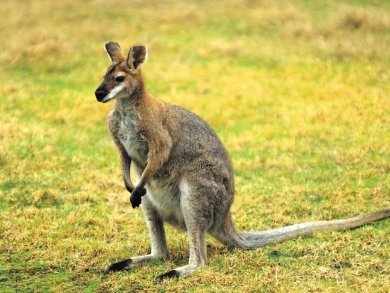Globally, livestock are the largest source of methane from human-related activities. Ruminants produce methane as part of the pre-digestion of food, which includes a period of fermentation to break down the foods and release nutrients. Like ruminants, wallabies have multiple compartments to their stomachs and pre-digest their food. Tammar wallabies, however, release 80 % less methane gas per unit of digestible energy than livestock.
Mark Morrison and co-workers, CSIRO Livestock Industries, Australia, have isolated the unique gut bacteria of the Tammer wallaby. They found the dominant bacteria belonged to the Succinivibrionaceae family and they were able to isolate and grow this bacterium, called WG-1, in culture to test and confirm its properties. WG-1 was shown to fix CO2 in the stomach as succinate rather than methane.
This gives a new approach for redirecting fermentation and reducing methane production in livestock.
- Isolation of Succinivibrionaceae Implicated in Low Methane Emissions from Tammar Wallabies
P. B. Pope, W. Smith, S. E. Denman, S. G. Tringe, K. Barry, P. Hugenholtz, C. S. McSweeney, A. C. McHardy, M. Morrison,
Science 2011.
https://doi.org/10.1126/science.1205760




